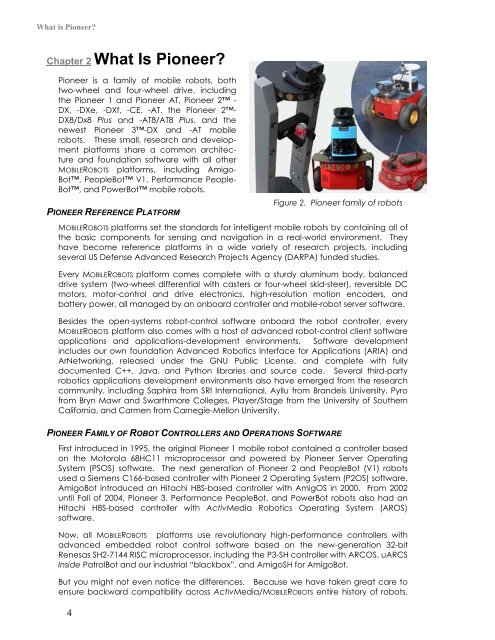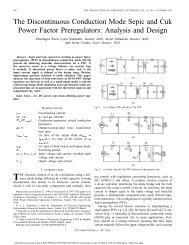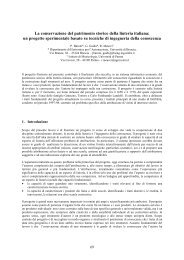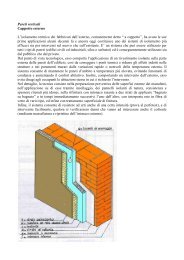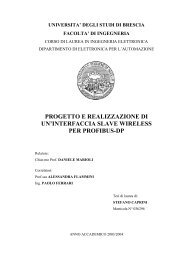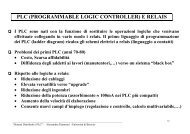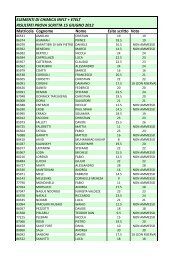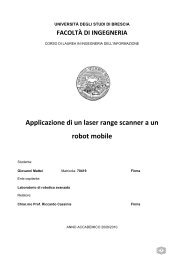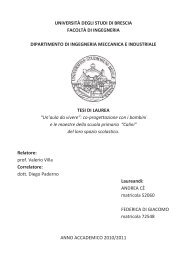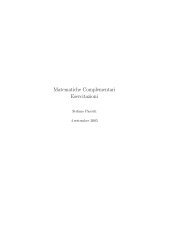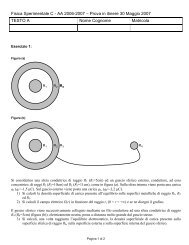Pioneer 3™ Operations Manual
Pioneer 3™ Operations Manual
Pioneer 3™ Operations Manual
You also want an ePaper? Increase the reach of your titles
YUMPU automatically turns print PDFs into web optimized ePapers that Google loves.
What is <strong>Pioneer</strong>?<br />
Chapter 2<br />
What Is <strong>Pioneer</strong>?<br />
<strong>Pioneer</strong> is a family of mobile robots, both<br />
two-wheel and four-wheel drive, including<br />
the <strong>Pioneer</strong> 1 and <strong>Pioneer</strong> AT, <strong>Pioneer</strong> 2 -<br />
DX, -DXe, -DXf, -CE, -AT, the <strong>Pioneer</strong> 2-<br />
DX8/Dx8 Plus and -AT8/AT8 Plus, and the<br />
newest <strong>Pioneer</strong> 3-DX and -AT mobile<br />
robots. These small, research and development<br />
platforms share a common architecture<br />
and foundation software with all other<br />
MOBILEROBOTS platforms, including Amigo-<br />
Bot, PeopleBot V1, Performance People-<br />
Bot, and PowerBot mobile robots.<br />
PIONEER REFERENCE PLATFORM<br />
Figure 2. <strong>Pioneer</strong> family of robots<br />
MOBILEROBOTS platforms set the standards for intelligent mobile robots by containing all of<br />
the basic components for sensing and navigation in a real-world environment. They<br />
have become reference platforms in a wide variety of research projects, including<br />
several US Defense Advanced Research Projects Agency (DARPA) funded studies.<br />
Every MOBILEROBOTS platform comes complete with a sturdy aluminum body, balanced<br />
drive system (two-wheel differential with casters or four-wheel skid-steer), reversible DC<br />
motors, motor-control and drive electronics, high-resolution motion encoders, and<br />
battery power, all managed by an onboard controller and mobile-robot server software.<br />
Besides the open-systems robot-control software onboard the robot controller, every<br />
MOBILEROBOTS platform also comes with a host of advanced robot-control client software<br />
applications and applications-development environments. Software development<br />
includes our own foundation Advanced Robotics Interface for Applications (ARIA) and<br />
ArNetworking, released under the GNU Public License, and complete with fully<br />
documented C++, Java, and Python libraries and source code. Several third-party<br />
robotics applications development environments also have emerged from the research<br />
community, including Saphira from SRI International, Ayllu from Brandeis University, Pyro<br />
from Bryn Mawr and Swarthmore Colleges, Player/Stage from the University of Southern<br />
California, and Carmen from Carnegie-Mellon University.<br />
PIONEER FAMILY OF ROBOT CONTROLLERS AND OPERATIONS SOFTWARE<br />
First introduced in 1995, the original <strong>Pioneer</strong> 1 mobile robot contained a controller based<br />
on the Motorola 68HC11 microprocessor and powered by <strong>Pioneer</strong> Server Operating<br />
System (PSOS) software. The next generation of <strong>Pioneer</strong> 2 and PeopleBot (V1) robots<br />
used a Siemens C166-based controller with <strong>Pioneer</strong> 2 Operating System (P2OS) software.<br />
AmigoBot introduced an Hitachi H8S-based controller with AmigOS in 2000. From 2002<br />
until Fall of 2004, <strong>Pioneer</strong> 3, Performance PeopleBot, and PowerBot robots also had an<br />
Hitachi H8S-based controller with ActivMedia Robotics Operating System (AROS)<br />
software.<br />
Now, all MOBILEROBOTS platforms use revolutionary high-performance controllers with<br />
advanced embedded robot control software based on the new-generation 32-bit<br />
Renesas SH2-7144 RISC microprocessor, including the P3-SH controller with ARCOS, uARCS<br />
Inside PatrolBot and our industrial “blackbox”, and AmigoSH for AmigoBot.<br />
But you might not even notice the differences. Because we have taken great care to<br />
ensure backward compatibility across ActivMedia/MOBILEROBOTS entire history of robots,<br />
4


